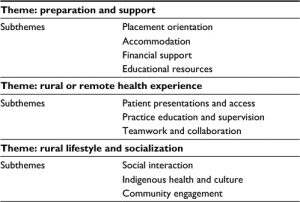
How to Start a House Flipping Business in 5 Simple Steps

High-quality finishes, professional staging, and high-resolution photography can justify a higher price because buyers perceive they are getting a better product. Next, analyze the real estate market to understand the going rates for comparable homes in the area. This research will help you determine a competitive yet reasonable price point. You don’t necessarily need to be the cheapest option, but you should be within a range that makes sense for the location and the quality of your renovations.
Understanding the trends in property values, the speed at which homes sell, and the types of homes that are in demand will guide your decision on where to invest. If the market is hot for starter homes, you might focus on smaller properties that can be quickly renovated and sold to first-time homebuyers. Our house flipping business plan is updated biannually to reflect these new and emerging trends. We believe this will assist you in creating flips that resonate with current buyer preferences and market demands. The SWOT acronym stands for strengths, weaknesses, opportunities, and threats. As part of a house-flipping business plan, a SWOT intuit tax calculator Analysis empowers real estate investors to assess their competitive position and develop strategic operations.
On average, experienced house flippers may aim for two to five flips yearly. Scaling beyond these numbers often requires a well-established operation, access to financing, and efficient project management. Real estate investors use the 70% rule in house flipping to determine the maximum purchase price for a property to ensure a profitable flip. According to this rule, investors should not pay more than 70% of the property’s after-repair value (ARV) minus the estimated repair and carrying costs.
A savvy real estate agent with experience in the local market is crucial for identifying potential properties and negotiating purchases and sales. They can also provide insights into what features and improvements are most likely to increase a property’s value and appeal to buyers. This approach not only supports local businesses and reduces your carbon footprint but also ensures that your renovations are well-received and valued by the community. Make connections with local contractors and suppliers to understand what materials and design elements are popular and sustainable. This knowledge allows you to plan your flips with the community in mind, offering design choices that can attract buyers looking for homes that fit the local aesthetic. Tailoring your renovations to the local market also creates a sense of belonging among your buyers, as they feel their new home is truly a part of the community.
How To Start A House-Flipping Business: Step-By-Step Guide For Beginners
The best systems allow you to set up alerts for budget overruns and provide reports on financial performance, helping you stay on track and make adjustments as needed. When hiring for key positions, prioritize candidates with a mix of how to use depreciation and amortization for your financial reports technical skills, experience, and a passion for renovation and real estate. Scaling up also means more materials and labor, so negotiate pricing with suppliers and contractors for bulk purchases and services without sacrificing workmanship quality.
Step 13: Run a House Flipping Business – Start Making Money!
As today’s top investors know, a well-crafted house-flipping business plan transforms success into a habit, elevating their startup to new heights. For example, as an LLC, you can deduct marketing and operational expenses immediately; this can help you put some dough back into your pocket before you sell the property. Many believe a lack of funds is a significant obstacle to flipping houses, but that’s not true. By leveraging other people’s money (OPM), they can finance their projects through private lenders, hard money loans, or partnerships with investors.
- Also, consider the scalability of your flipping strategy and how you might grow your business over time.
- Even if you plan to contribute sweat equity to your house-flipping business, you’ll probably need additional contractors to complete a project successfully.
- Scaling up also means more materials and labor, so negotiate pricing with suppliers and contractors for bulk purchases and services without sacrificing workmanship quality.
How you should prepare to start a house flipping enterprise

Consulting professionals, such as attorneys and accountants, ensure you set up your entity correctly. Proper business operations keep your enterprise organized, efficient, and legally compliant. Before taking any house-flipping steps, it’s crucial to lay a strong foundation. This base involves creating a comprehensive business plan encompassing operational setup, team recruitment, property evaluation, securing funds, and the flipping process. To aid in this endeavor, we offer a free template and seven critical steps on how to start a house-flipping business to help you craft a solid strategy and ensure your venture’s success. Planning, logistics, and administrative organization will make or break your project—although you have the potential to make a big, quick profit, starting a house-flipping business is no walk in the park.
Apart from your legal business entity, you must register your business with the Internal Revenue Service (IRS) and get an employee identification number (EIN). Make sure to also check with your state and local municipality for what other business licenses and permits you may need, such as building permits, change of use, or special exceptions to zoning ordinances. For instance, if someone gets injured during a demolition, they can sue your company.
You can expect to need several permits, since construction is essential to flipping houses. They are less formal, which can be nice, but it is also important to quickly establish the terms of the loan before getting too far along in the buying accounting coach bookkeeping process. Essentially, the house you purchase would serve as collateral and could be seized by your investors if you don’t pay back your loan. These loans are some of the easiest to obtain, but this convenience comes at a price. They are typically more short-term, typically ranging anywhere from 6 months to 5 years to pay it back, and usually also have higher interest rates. Unlike more traditional bank loans, your credit score and income do not play as large of a role.
Still, getting the right financing and maximizing your profits is necessary. While many think flipping houses is solely about buying, renovating, and selling, it’s crucial to establish the proper business foundation for long-term success. This step involves choosing the correct legal entity, like an LLC, registering your business, and creating separate bank accounts.
© 2021 Oak Tree. All rights reserved.


Comments are closed.